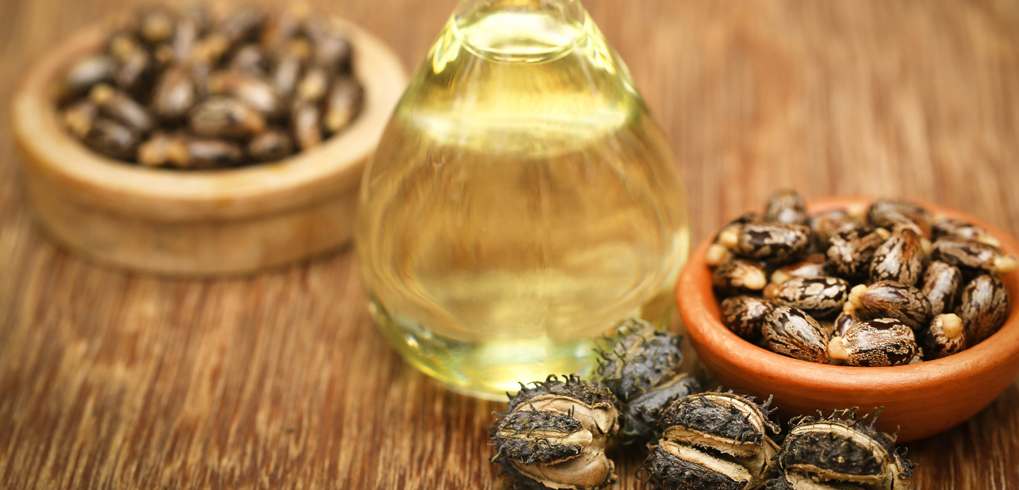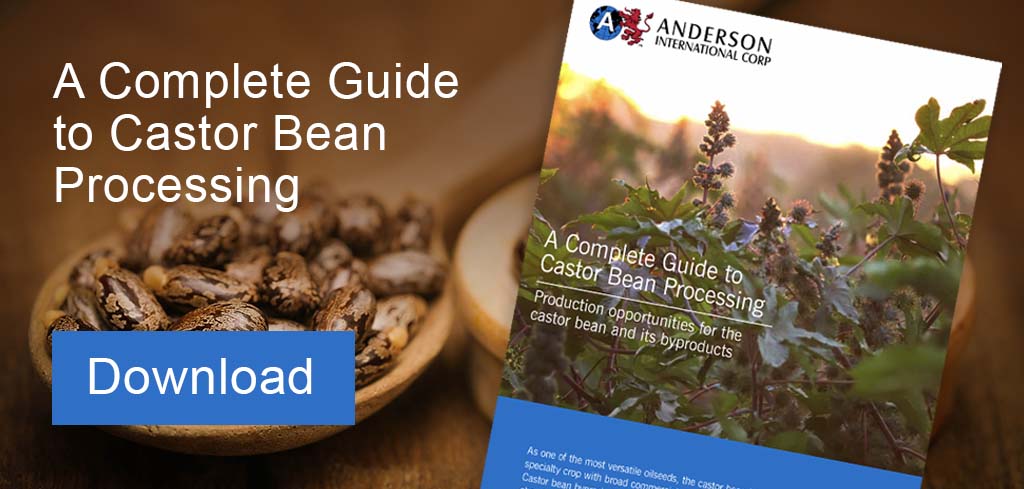
With a wide range of applications spanning many different industries, the castor bean is one of the most versatile oilseeds on the planet. Derivatives of the castor oil production process are used in more than 700 products, ranging from nylon and polyester to pharmaceuticals, cosmetics, and high-performance motor oils.
Driven by the search for renewable alternatives to petroleum-based products, the demand for castor continues to expand across emerging applications like biodiesel and polymer production. In fact, the increasing demand for castor oil and other byproducts now outpaces the rate of global production—presenting a lucrative potential for specialty oilseed processors.
To keep up with the ever-expanding demand for castor, processors need to understand the challenges and opportunities that exist throughout the castor oil production process. Here’s a quick overview of the steps involved in castor oil processing, and the methods used to transform toxic raw beans into finished byproducts.
Global castor production
The castor bean plant, Ricinus communis, is native to Africa, where it was first domesticated centuries ago. Since then, the plant has been naturalized to grow in other tropical, subtropical, and even temperate regions throughout India, China, South America, and the U.S.
While some castor plants have been cultivated for their ornamental beauty and bright red flowers, commercial castor plants are bred for optimal oil production. The shrubs, which can grow up to 40 feet tall, produce feathery flowers that develop golf-ball sized seed capsules covered in spines. Each capsule contains three seeds that pop out of the pods once ripe. These “beans” are harvested for their oil, which makes up about half the weight of the seed.
India leads global castor production, producing as much as 350,000 tons of castor oil annually, accounting for more than 75% of total worldwide production and more than 90% of total exports. China and Brazil trail India in castor oil processing, respectively producing about 12% and 5% of the total global volume.
Because the majority of the world’s castor oil production is concentrated in these three countries, supply fluctuations from year to year can dramatically influence prices and availability. In 2021, global castor oil production topped 767,000 tons. To keep up with increasing worldwide demand for castor’s bountiful byproducts, processors must address the challenges that plague the castor oil production process.
Castor oil processing
Although castor beans contain unique chemical compounds that make them ideal for many different applications, the raw material also contains powerful toxins that can be deadly unless properly deactivated. One of the biggest challenges of castor processing is detoxifying these harmful components without damaging the beneficial proteins that make castor so useful. That requires careful precautions throughout the production process.
Oilseed preparation
As with most oilseeds, the castor oil production process begins with dehulling and cleaning the beans to remove shells, stems, and other foreign materials. Oil processors then heat batches of dehulled castor beans in steam-jacketed cookers or forced hot air vessels to remove moisture and harden the seeds for more effective mechanical pressing.
Castor oil extraction
Mechanical pressure is then used to crush the seed material and release the oil inside. Because of its high-torque, dual-press design, the Anderson Duo™ Series Expeller® allows for maximum castor oil recovery in a single pass.
Engineered specifically for tough-to-process oilseeds like castor beans, the Duo is ideal for pressing smaller capacities of 10 to 30 tons per day. Machine sizing is key to maintaining a continuous castor oil production process, since oversized machines will not press material efficiently, and can unnecessarily increase a plant’s capital expenditures and operating costs over time. By achieving the lowest possible residual oils with the most efficient horsepower, the Duo is perfectly sized (and priced) for small-scale castor oil processing.
Read more: Capitalizing On Specialty Oils and Fats With The Anderson Super Duo
Castor oil refining
After extraction, the crude oil is filtered several times to purify the product for end-use. Then, filtered oil goes through several refining phases to remove any remaining impurities, colors, odors, and excess free fatty acids.
Due to its unique molecular structure—particularly, its high concentration of ricinoleic acid— castor oil exhibits many useful properties that contribute to a wide variety of product applications. For example:
- High viscosity makes it useful as a high-performance lubricant for jet engines and a renewable alternative for biodiesel fuel.
- Oxidative stability gives it a relatively high shelf life compared to other oils.
- High polarity makes it a beneficial emollient in soaps, lotions, conditioners, and cosmetics.
- Alcohol solubility combined with water insolubility makes it useful as an industrial coating and varnish.
- Purgative medicinal properties make it an effective laxative, while other medications take advantage of its emulsifying properties to bind nonpolar drug ingredients together.
- Compatibility with synthetic polymers makes castor oil the only plant oil that naturally reacts to develop polyester, nylon, and other plasticizers.
As the potential uses for castor oil derivatives expand, demand increases for this uniquely versatile oilseed.
Castor meal deallergenation
After castor oil is pressed from the seed, the residual material is known as castor cake. Although the ricin has already been deactivated by heat, the remaining meal also contains a potent allergen known as castor bean allergen-1 (CB1A). Because this toxin renders castor cake unsuitable for consumption, the meal was traditionally used as fertilizer instead of animal feed.
However, in the late 1980s, researchers began exploring ways to efficiently detoxify castor bean meal, using processing equipment like the Anderson Expander, which was traditionally used to cook animal feeds. To neutralize the acidic castor meal, the researchers blended in a basic lime solution, and then fed the material through the Expander to speed up the reaction. By generating frictional heat and high-shear pressure, the Expander encouraged the lime to react with the allergen to effectively deactivate it.
This deallergenated castor meal can be safely used as high-protein livestock feed, in addition to organic fertilizer.
Also read: Maximize Your Expeller-Pressed Oil Process With Overflow
Navigating the castor oil production process
The castor oil production process isn’t without challenges, or opportunities for expansion. By understanding how to navigate the nuances of castor oil processing, processors can position themselves for a rapidly growing market. As new use cases and production technologies continue to emerge, the growing demand outpaces global supplies, forcing facilities to explore more efficient means of castor production.
With castor oil prices recently averaging $2,000 per ton and market growth expected to reach $1.7 billion by 2025, processors who master the castor oil production process can unlock attractive profits. Building on decades of specialty oilseed processing experience, Anderson International can provide the expertise and the equipment that processors need to be successful in this expanding sector.
To learn more about pressing this specialty seed for a variety of valuable applications, contact us today.
